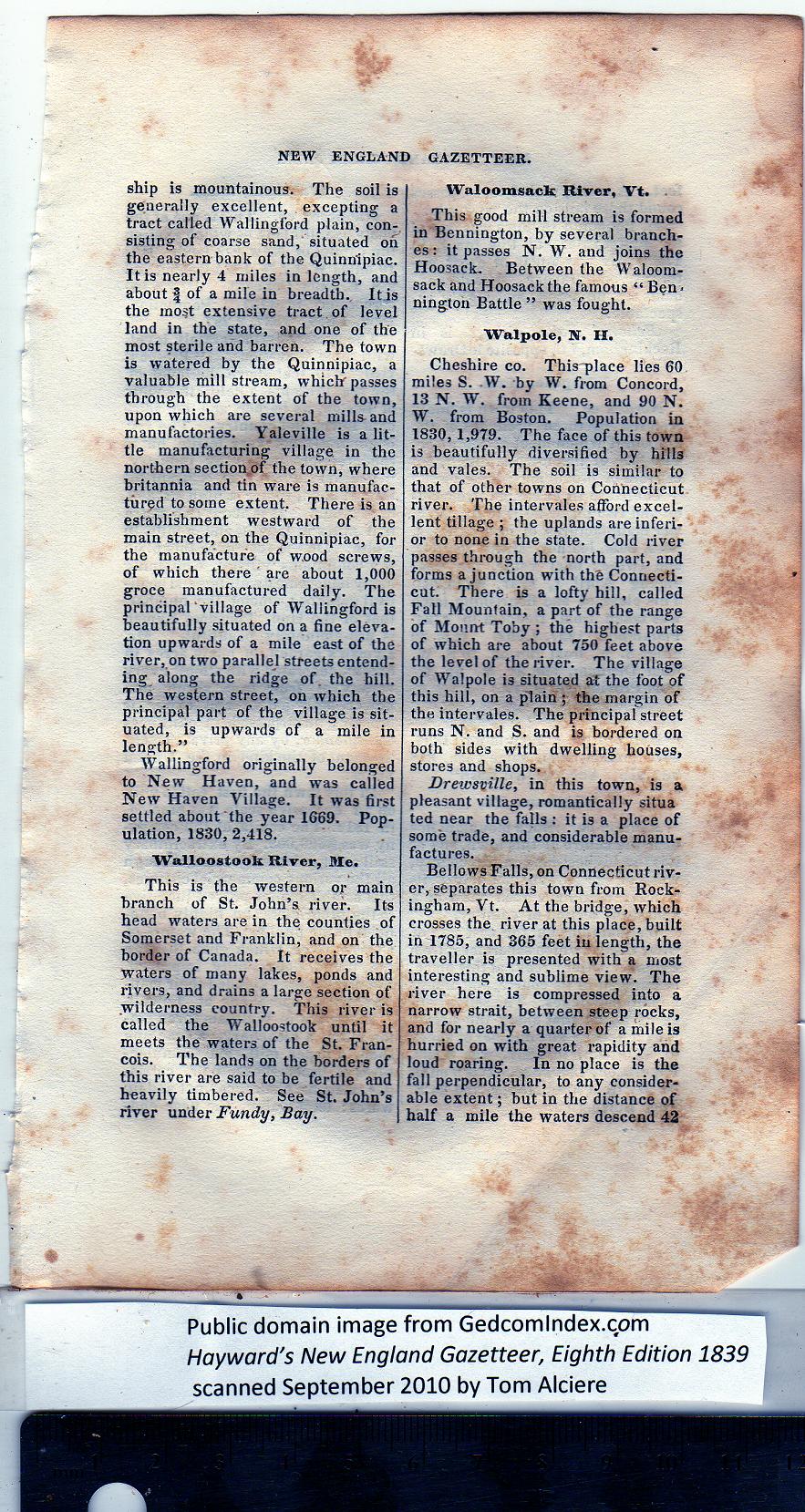|
ship is mountainous. The soil is
generally excellent, excepting a
tract called Wallingford plain, con-
sisting of coarse sand, situated oil
the eastern bank of the Quinnipiac.
It is nearly 4 miles in length, and
about | of a mile in breadth. It is
the most extensive tract of level
land in the state, and one of the
most sterile and barren. The town
is watered by the Quinnipiac, a
valuable mill stream, which' passes
through the extent of the town,
upon which are several mills and
manufactories. Yaleville is a lit-
tle manufacturing village, in the
northern section of the town, where
britannia and tin ware is manufac-
tured to some extent. There is an
establishment westward of the
main street, on the Quinnipiac, for
the manufacture of wood screws,
of which there are about 1,000
groce manufactured daily. The
principal village of Wallingford is
beautifully situated on a fine eleva-
tion upwards of a mile east of the
river, on two parallel streets entend-
ing along the ridge of the hill.
The western street, on which tbe
principal part of the village is sit-
uated, is upwards of a mile in
length.”
Wallingford originally belonged
to New Haven, and was called
New Haven Village. It was first
settled about the year 1669. Pop-
ulation, 1830,2,418.
Walloostook River, Me.
This is the western or main
branch of St. John’s river. Its
head waters are in the counties of
Somerset and Franklin, and on the
border of Canada. It receives the
waters of many lakes, ponds and
rivers, and drains a large section of
.wilderness country. This river is
called the Walloostook until it
meets the waters of the St. Fran-
cois. The lands on the borders of
this river are said to be fertile and
heavily timbered. See St. John’s
river under Fundy, Bay. |
Waloomsack River, Vt.
This good mill stream is formed
in Bennington, by several branch-
es : it passes N. W. and joins the
Hoosack. Between the Waloom-
sack and Hoosack the famous “ Ben*
nington Battle ” was fought.
Walpole, N. II.
Cheshire co. This place lies 60
miles S. W. by W. from Concord,
13 N. W. from Keene, and 90 N.
W. from Boston. Population in
1830,1,979. The face of this town
is beautifully diversified by hilU
and vales. The soil is similar to
that of other towns on Connecticut
river. The intervales afford excel-
lent tillage ; the uplands are inferi-
or to none in the state. Cold river
passes through the north part, and
forms a junction with the Connecti-
cut. There is a lofty hill, called
Fall Mountain, a part of the range
of Mount Toby ; the highest parts
of which are about 750 feet above
the level of the river. The village
of Walpole is situated at the foot of
this hill, on a plain ; the margin of
the intervales. The principal street
runs N. and S. and is bordered on
both sides with dwelling houses,
stores and shops.
Drewsville, in this town, is a
pleasant village, romantically situa
ted near the falls : it is a place of
some trade, and considerable manu-
factures.
Bellows Falls, on Connecticut riv-
er, separates this town from Rock-
ingham, Vt. At the bridge, which
crosses the river at this place, built
in 1785, and 365 feet in length, the
traveller is presented with a most
interesting and sublime view. The
river here is compressed into a
narrow strait, between steep rocks,
and for nearly a quarter of a mile is
hurried on with great rapidity and
loud roaring. In no place is the
fall perpendicular, to any consider-
able extent; but in the distance of
half a mile the waters descend 42 |
